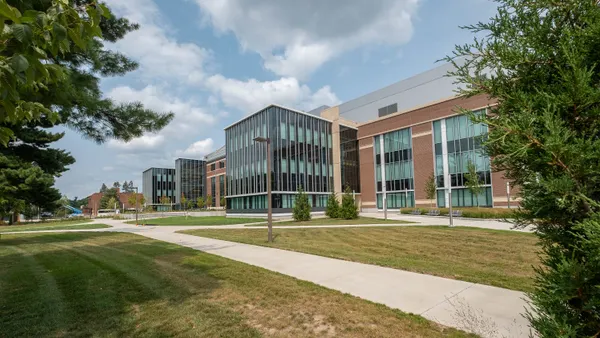Dive Brief:
- The U.K. green building standard BREEAM (Building Research Establishment Environmental Assessment Methodology) has landed in the U.S., and proponents are touting it as a cost-effective alternative to the U.S.-based LEED standard, according to GreenBiz.
- BREEAM officials are targeting the estimated 5.6 million existing U.S. commercial buildings with its "scientifically-based" In-Use assessment tool, which reveals the building's current green status and what additional green renovations — presented as a series of steps — would be appropriate in the context of BREEAM certification.
- BRE America, a collaboration between BREEAM and LEED certification consultant group BuildingWise, has released a new technical manual this week that takes into consideration regulations and standards specific to the U.S., according to Proud Green Building.
Dive Insight:
Although BREEAM is in wide use in the U.K. and Europe, LEED is still the most broadly adopted green building standard across all countries. However, BREEAM proponents claim that LEED is more expensive and time-consuming to implement.
U.S. building owners are increasingly adopting green building elements and pursuing certifications like LEED, net-zero, Passive House and WELL. In fact, at the end of June, the World Green Building Council set a goal of 100% net-zero buildings worldwide by 2050 as part of its "Advancing Net Zero" plan, with all new buildings and major renovations to be designed for the net-zero standard by 2030.
While the sustainable aspects of green buildings can be appealing to building owners, the proven financial benefits are also an incentive. According to a 10-year study conducted by commercial real estate company Bentall Kennedy, LEED-certified buildings can get 3.7% more in rent and have a 4% higher occupancy rate than their noncertified counterparts. The company also found that ENERGY STAR-certified buildings can command 2.7% more rent and have 9.5% higher occupancies.












